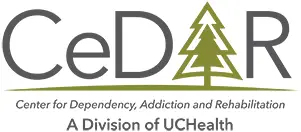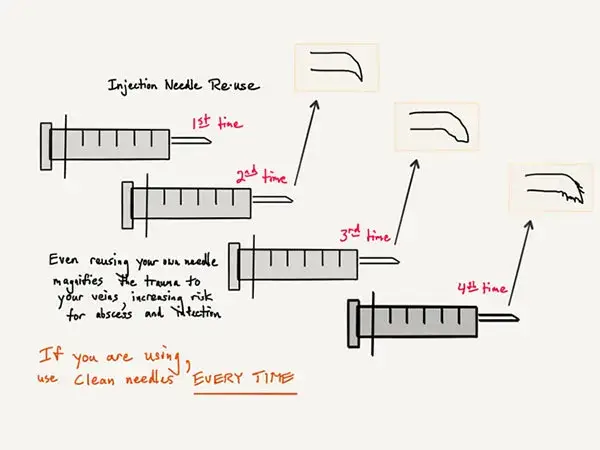SOCIOLOGY AND PUBLIC HEALTH
Most intravenous heroin users have preferences about needle gauge and personal safety. The typical range for such use is 27 to 29 gauge needles. The smaller the number, the larger the bore of the needle and the greater the volume of substance moved through that shaft. Most of those users often neglect some of the microscopic changes that can occur from needle reuse. Although health agencies pay attention to needle-use habits, greater education around safe needle usage can prevent primary as well as secondary infections. The health conditions we tend to address with the needle discussion include:
- Decreasing risk of overdose
- Preventing transmission of HIV
- Preventing transmission of Hepatitis C (both ‘primary infections’)
Secondary Problems
The secondary infection issues connected to needle use, which may be more pertinent to many users include:
- Preventing internal infections such as endocarditis from skin bacteria
- Preventing the development of abscesses
- Avoiding collapsed veins
As most intravenous users know, NEVER SHARE NEEDLES. This was the target initiative for almost all of harm reduction practices in the early 1980s during the surge of the AIDS crisis. At that time, much of harm reduction policy emphasized this message, and it overall worked. For instance, harm reduction practices in Australia from 1982-1986 showed some stabilization of new HIV incidences whereas new cases were blossoming everywhere else in the world.
New data from our harm reduction colleagues emphasizes another often ignored safety practice:
- Never Share Needles WITH YOURSELF (i.e. Don’t Reuse)
Some of the needle reuse rates correlate with greater risk of abscesses, endocarditis, and collapsed veins. Through that practice and poor puncture rates, increased instances of the user entirely missing veins occur. Users end up injecting heroin into the muscle. These practices further the risk for complications including overdose rates. The mangled needle phenomenon is best shown in this sketch:
If you are an intravenous user or a clinician advocating for healthy options for your patients, appreciate this distortion in the needles over time and recommend safe options. The harm reduction centers are promoting clean needle use every time as this prevents the toxic re-use issues as well as the sharing risks for the severe infections.
Read more CeDAR Education Articles about Sociology and Public Health including Social Cost of Opioid Painkiller Abuse.

